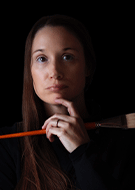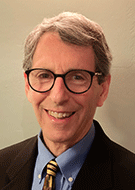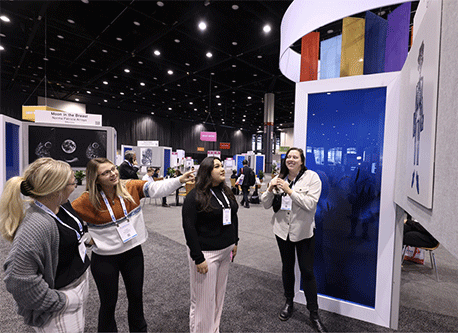Exploring the Intersection of Art and Radiology
Radiologists tout art appreciation as a way to feel more connected and improve visual acuity




Incorporating arts and the humanities into the practice of radiology can help alleviate stress and burnout—and, at the same time, improve a radiologists’ interpretation skills, ultimately leading to better patient care, according to Erin A. Cooke, MD.
“The arts and humanities can serve as a conduit for connection with others,” she said. “This could be through shared experiences of in-person or virtual arts-based events, through self-expression in art creation or through taking in the art of others, allowing a broadening of perspective.”
Dr. Cooke, associate professor in the Department of Radiology and Radiological Sciences and director of the diagnostic radiology residency program at Vanderbilt University in Nashville, TN, serves as the department’s director of arts, a role in which she incorporates arts-related activities into the radiology department.
“Besides acting as a bonding mechanism among radiologists and trainees, art can also promote discussion, empathy and appreciation for other people, including patients,” Dr. Cooke said.
Kari Visscher, MD, MScBMC, a radiologist and adjunct professor at McMaster University in Ontario, Canada, who also holds a master’s degree in biomedical communication describes herself as an “artist, radiologist and mother.” She has similar feelings about the power of art.
“It provides an opportunity to re-center, take a breath, process emotions and express them in a way that can create beauty even from a place of unpleasantness,” she said.
RSNA's Popular Art of Imaging Exhibit at the Annual Meeting
A unique exhibit takes place in the Learning Center during the RSNA annual meeting. The Art of Imaging is a contest for RSNA members to submit their art that makes use of imaging.
Categories for submission include:
Radiology art—Medical images altered to become works of art.
Artificial Intelligence Art—Images representing AI or created using AI
Connections Through Art—Images illustrating the power of connections.
In 2023, close to 300 entries were submitted. More than 2,000 registered attendees participated in the voting to determine which 16 submissions would be showcased at the annual meeting.
The RSNA 2024 contest is open.
View last year’s entries at RSNA.Wishpond.com/Radiology-Art-2023.
Using VTS to Analyze Art
In the world of art appreciation, various techniques are taught for analyzing and interpreting art, such as Visual Thinking Strategies (VTS), which help guide viewers in making observations, synthesizing information and avoiding pitfalls.
“VTS is an approach to using art images in teaching through facilitated group discussion focusing on an art image,” Dr. Cooke said. “Participants are guided in looking carefully at the piece and on ways to communicate those observations. As it is a group exercise, the perceptions can build upon what others share.”
Application of arts-based activities such as VTS can help radiologists and trainees examine their ways of working and practice strategies to minimize discrepancies in interpretation and underlying cognitive biases, and to promote creative and flexible critical thinking, she noted.
“To me, looking at art has many crossovers to looking at radiologic images. I enjoy making findings and observations, using my experiences and knowledge to try to create the story and differential for, ‘What is going on?’ in this image or study,” said Sarah Sarvis Milla, MD, chief of pediatric radiology, vice chair of radiology and the John D. Strain Endowed Chair for Radiology at Children’s Hospital Colorado in Aurora. “VTS allows practice of validating one’s conclusions with visual cues and features, while also asking, ‘What more can we find?’”
A recent Academic Radiology study used VTS to investigate whether a better understanding of paintings depicting radiology encounters could broaden medical students’ understanding of the radiology profession. The researchers concluded that exploring radiology-specific artwork yielded benefits including helping the medical students learn to challenge negative stereotypes of the profession and of radiologists.

Implementing Art Appreciation Programs
The Vanderbilt Radiology Art Gallery hosts annual art exhibits to provide an avenue for creative expression and develop a means of connection, Dr. Cooke noted.
“We have a small committee that holds a call for art and reviews the submissions,” she said. “All departmental staff, faculty, residents, fellows, medical students as well as family members are encouraged to submit.”
The goal, she said, is to create connections between radiologists, trainees and staff on the technologist and administrative side through conversations about the arts.
Like Dr. Cooke, Andrew M. Singer, MD, a radiologist and assistant professor at UMass Chan Medical School in Worcester, believes in the value of making art appreciation part of radiology. Since 2016, Dr. Singer and colleagues have been exploring and refining art observation training techniques with the help of an art observation program they created in collaboration with the Worcester Art Museum. The workshop consists of a onehour lecture followed by a two-hour museum visit. Dr. Singer explained that the radiology residents are instructed to be as specific as possible regarding the visual elements of each of the four paintings they observed.
“The purpose was to identify and describe findings without interpretation, and then to give the findings context, in order to clearly analyze and present the ‘story’ that the artist is conveying in the artwork,” Dr. Singer said. “This parallels the radiologist’s presentation of the findings and impression for an imaging study.”
“Feedback indicates that residents acquired increased comfort in closely analyzing imaging studies, developed a deeper understanding of putting the findings together in a cohesive manner and were better able to see ‘the big picture’ and appreciate the interconnectedness of the image elements,” he said.
At the University of Colorado School of Medicine, Dr. Milla is working to develop a relationship between art and radiology. She is a facilitator in the School of Medicine’s course on Art in Medicine, co-developed with the Centre for Bioethics and Humanities and the Denver Art Museum, which gives medical students the opportunity to study, interpret and create art. She recently published their experiences in the Art of Medicine course with her collaborators: an emergency room physician and an art museum educator from the Denver Art Museum.
Dr. Milla recently completed an art museum-based health professions education fellowship at the Harvard Macy Institute in Boston and is a certified facilitator of VTS.
“Techniques, such as VTS, allow empathy, deep listening, critical thinking, perspective taking and tolerance of ambiguity," Dr. Milla said. "These skills have intrinsic crossover not only in medicine, but in team dynamics and leadership.”
These skills, noted Dr. Visscher, showcase how art can be used as an effective learning tool throughout a physician’s career.
“It minimizes power differentials between instructors and learners while engaging emotional states, which provokes and stimulates learning,” she said.
For More Information
Access the Vanderbilt Radiology Art Gallery at VUMC.org/radiology/art.
Access the Clinical Imaging study at sciencedirect.com/journal/clinical-imaging.
Access the International Review of Psychiatry paper at tandfonine.com/journals/iirp20.
Read previous RSNA News articles about art and radiology: